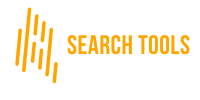How can the OSINT tool support business research?
In today’s fast-changing business world, access to reliable and timely information is crucial for making informed decisions. In this context, the OSINT (Open Source Intelligence) tool is becoming an invaluable support for business research. The use of OSINT in analyzing the market, competition, trends and in identifying new business opportunities opens up new horizons for companies. In the following text, we will look at how the OSINT tool can support business research, highlighting its versatility and versatility.








